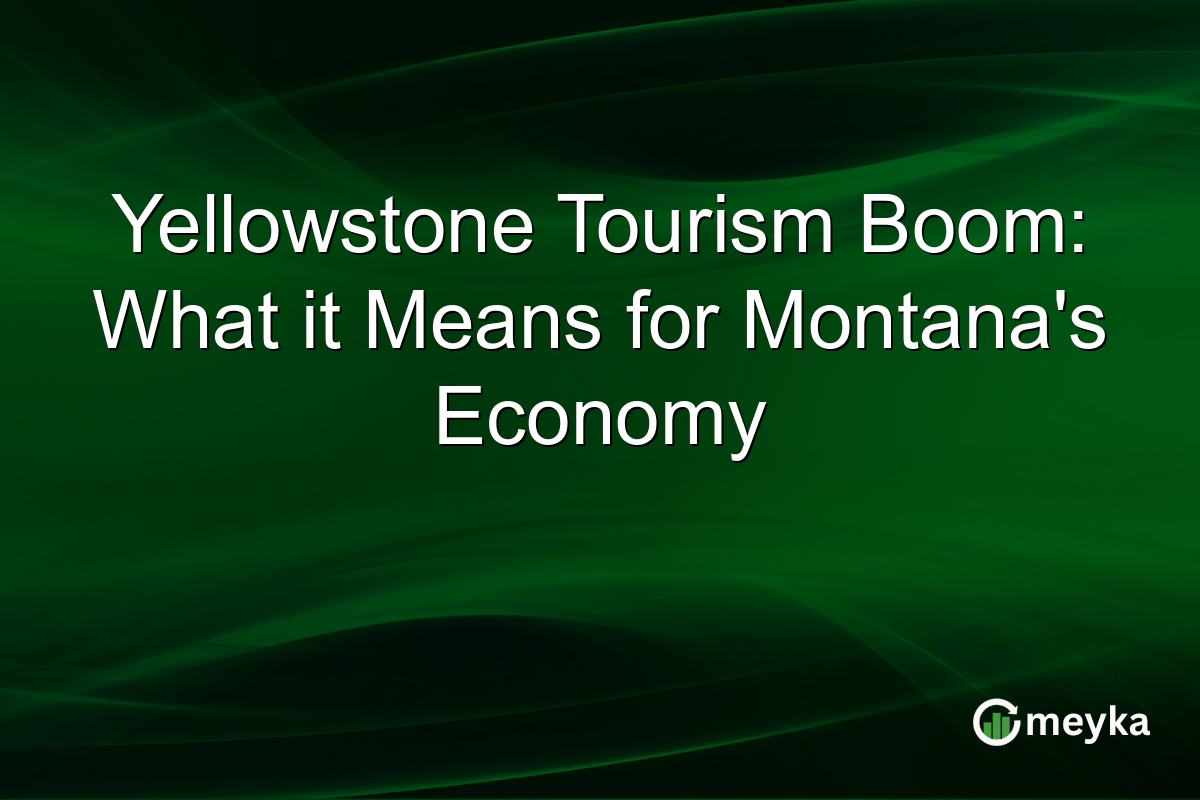Yellowstone Tourism Boom: What it Means for Montana’s Economy
Yellowstone National Park experienced a record-breaking year in 2024 with 4.7 million visitors. This surge in Yellowstone tourism significantly boosts Montana’s economy, particularly benefiting the western communities reliant on tourism. With visitor numbers soaring and spending rising, local businesses and state revenues are feeling the positive effects. Understanding this economic impact is crucial for shaping future tourism strategies.
The Economic Impact of Increased Visitors
In 2024, Yellowstone attracted 4.7 million visitors, marking a significant increase compared to previous years. This growth in Yellowstone tourism Montana is pivotal for the state’s economic health. Tourism contributes approximately €4 billion annually to Montana’s economy, with Yellowstone playing a central role. Increased visitor numbers lead to higher spending in hospitality and retail sectors, boosting local businesses.
Interestingly, discussions on X highlight how western Montana communities have seen an uptick in job creation and tax revenue due to this tourism boom. [Link to relevant X post] Additionally, service industries such as hotels and restaurants reported a rise in bookings and sales, attributing much of their success to the influx of tourists.
This shows the tangible benefits tourism brings to local economies, driving growth and stability for many businesses.
Infrastructure Strain and Environmental Concerns
While the economic benefits are clear, the surge in tourism presents challenges. Increased visitation puts pressure on infrastructure, such as roads and national park facilities. Maintenance costs are rising as a result. Montana’s government is now focusing on sustainable tourism practices to mitigate environmental impacts caused by high foot traffic in Yellowstone.
Furthermore, there’s a growing concern about preserving natural habitats in the face of increased tourist activity. Legal frameworks are being considered to protect these areas from overuse and degradation. The state aims to balance tourism growth with environmental conservation, ensuring its long-term viability.
Looking ahead, Montana’s approach will determine how effectively it can handle the dual challenge of economic growth and environmental protection.
Tourism Industry Growth and Opportunities
The state’s tourism industry is thriving, driven largely by Yellowstone visitor increase. Montana’s western regions, in particular, are reaping the benefits. Local businesses, from boutique shops to guided tour operators, have expanded their offerings. This expansion reflects the broader trend of tourism industry growth, with projections indicating a steady rise in revenue.
Opportunities abound for new businesses catering to diverse tourist needs, such as adventure tourism, eco-tourism, and cultural experiences. As the industry grows, it is crucial for stakeholders to leverage these opportunities, promoting Montana as a premier destination and supporting sustainable practices.
For investors, the tourism boom in Yellowstone and Montana presents a promising avenue for economic engagement and growth.
Final Thoughts
Yellowstone’s unprecedented tourism boom underscores its vital role in bolstering Montana’s economy. Increased visitor numbers enhance local economies, stimulate job creation, and contribute significantly to state revenues. However, balancing this growth with environmental sustainability remains a crucial task. Montana’s future success will depend on its ability to develop infrastructure, enforce environmental policies, and capitalize on new tourism opportunities. As we move forward, strategic partnerships and innovative tourism strategies will play pivotal roles in ensuring that the benefits of this boom are sustainable and wide-reaching.
FAQs
The surge in Yellowstone tourism has led to increased spending in local businesses, particularly in the hospitality and retail sectors. This has resulted in job creation and higher sales, boosting Montana’s economy overall.
The main concerns include overuse of natural habitats, increased waste, and strain on park facilities. Montana is implementing sustainable practices to mitigate these impacts and preserve the natural environment.
The tourism boom offers opportunities for businesses in adventure tourism, eco-tourism, and cultural experiences. It allows for economic engagement, job creation, and sustainable development in the region.
Disclaimer:
The content shared by Meyka AI PTY LTD is solely for research and informational purposes. Meyka is not a financial advisory service, and the information provided should not be considered investment or trading advice.






